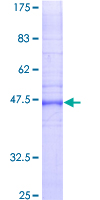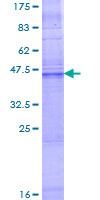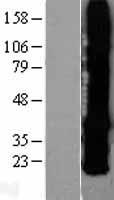order histories, retained contact details for faster checkout, review submissions, and special promotions.
Forgot password?
order histories, retained contact details for faster checkout, review submissions, and special promotions.
Locations
Orders Processing,
Shipping & Receiving,
Warehouse
2 Shaker Rd Suites
B001/B101
Shirley, MA 01464
Production Lab
Floor 6, Suite 620
20700 44th Avenue W
Lynnwood, WA 98036
Telephone Numbers
Tel: +1 (206) 374-1102
Fax: +1 (206) 577-4565
Contact Us
Additional Contact Details
order histories, retained contact details for faster checkout, review submissions, and special promotions.
Forgot password?
order histories, retained contact details for faster checkout, review submissions, and special promotions.
GJB2 / CX26 / Connexin 26
gap junction protein, beta 2, 26kDa
GJB2 / CX26 / Connexin 26 is a member of the gap junction protein family. The gap junctions were first characterized by electron microscopy as regionally specialized structures on plasma membranes of contacting adherent cells. These structures were shown to consist of cell-to-cell channels that facilitate the transfer of ions and small molecules between cells. The gap junction proteins, also known as connexins, purified from fractions of enriched gap junctions from different tissues differ. According to sequence similarities at the nucleotide and amino acid levels, the gap junction proteins are divided into two categories, alpha and beta. Mutations in this gene are responsible for as much as 50% of pre-lingual, recessive deafness.
| Gene Name: | gap junction protein, beta 2, 26kDa |
| Family/Subfamily: | Ion Channel , Connexin |
| Synonyms: | GJB2, Connexin 26, Connexin-26, DFNB1A, DFNA3, DFNB1, Gap junction protein beta 2, KID, HID, PPK, NSRD1, CX26, DFNA3A |
| Target Sequences: | NM_004004 NP_003995.2 P29033 |
Publications (3)




If you do not find the reagent or information you require, please contact Customer.Support@LSBio.com to inquire about additional products in development.









